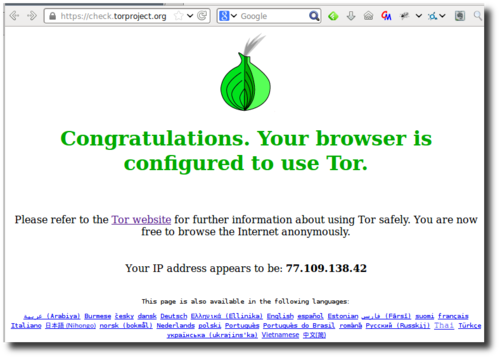

Go to Edit -> Preferences -> Advanced -> Network -> Settings. $ sudo apt-get install tor vidalia -keyringĭuring installation, you’ll be asked which user should be able to control Tor service. So add Tor repository to your distribution source lists. Tor is available in the default repositories of Debian/Ubuntu, but they might be bit outdated. Install Tor & Vidalia On Ubuntu / Debian / Linux Mint The steps provided here were tested on Ubuntu 13.04 Desktop, but it should work on all Debian/Ubuntu and its derivatives. In this quick how-to let us learn how to use Tor with our browsers. Today, it is used every day for a wide variety of purposes by normal people, the military, journalists, law enforcement officers, activists, and many others. Navy in mind, for the primary purpose of protecting government communications. It was originally developed with the U.S. Tor was originally designed, implemented, and deployed as a third-generation onion routing project of the U.S.

We can use Tor to keep websites from tracking us and also our family members, or to connect to news sites, instant messaging services, or the websites which are blocked by the Internet providers and Network Administrators. Tor allows organizations and individuals to share information over public networks without compromising their privacy. Tor, The Onion Router, is a network of Virtual Tunnels that allows users to communicate securely and as well as anonymously over Internet.


 0 kommentar(er)
0 kommentar(er)
